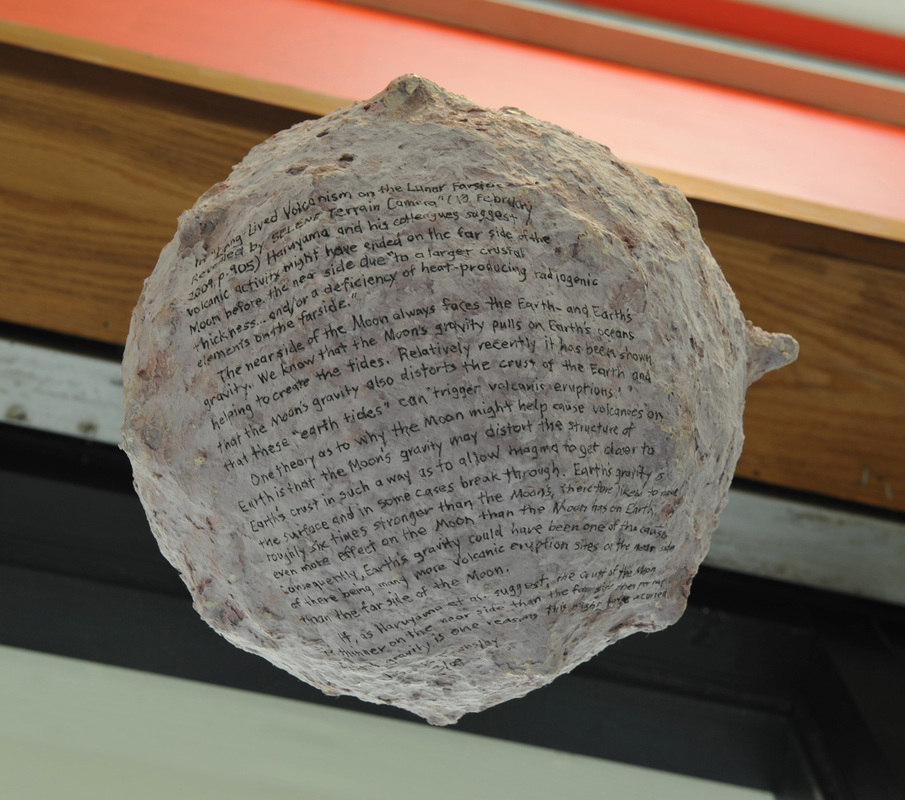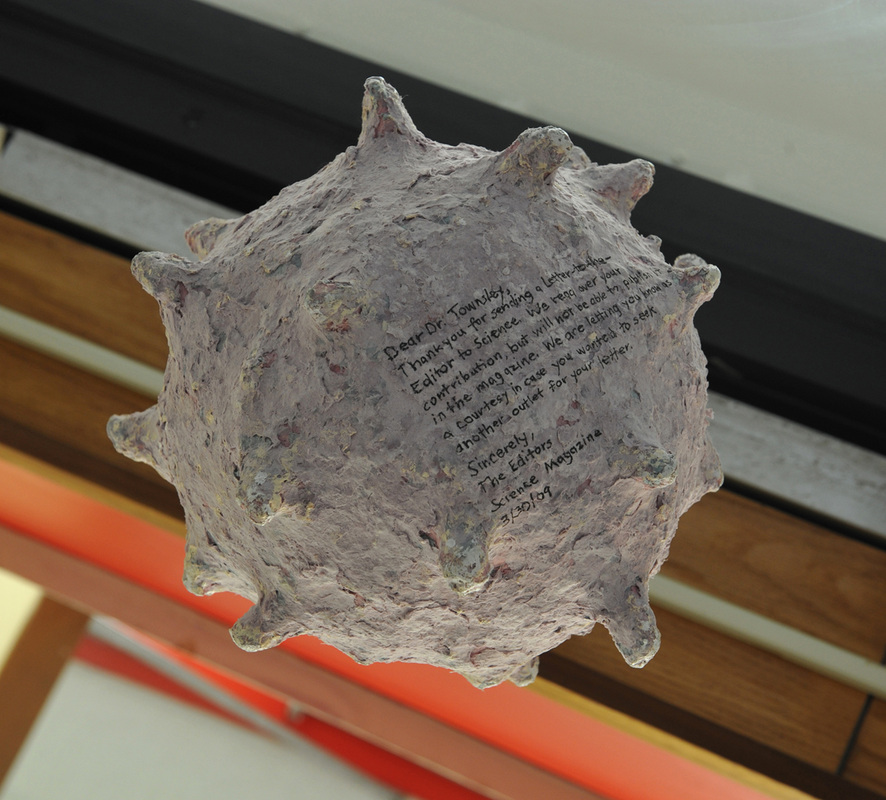


White Blood Cells / Letter to Science Magazine
1993, 2015
Each blood cell is c. 11 inches in diameter
Strathmore 400 drawing paper, recycled paper and fibers, glue, acrylic paint, ink markers
(Photos: Rick Lightbody)
I don’t have the actual version of the letter I sent to Science, so I attempted to recreate what I sent them for this piece. When I received their polite rejection suggesting that I find another place to print the letter, I
wondered where I was going to be able to have a letter to the Editors of Science magazine published other than Science magazine. Then it occurred to me that I could print the letter myself!
The connection involved in this piece is what I call “visual simile”, the moon and Earth are spherical shapes with reliefed surfaces, as generally are white blood cells. The white blood cells are placed on either side of the door similar to the sculptures of lions on either side of the entrances to various buildings (such as the New York CIty Public Library.) Like the lions, they are acting as guardians, white blood cells being a major component of our immune systems. If you wanted to have a somewhat shamanistic experience, you could envision the moon and Earth and white blood cells as spherical “beings” on levels “above” and “below” the one we normally see as reality. (If you can actually do this, try adding a layer of atoms under the whole structure, you’ll get a feeling of how much motion is actually happening while you’re just sitting in one place!)
The text on the piece reads as follows. I like how the Editors addressed me as “Dr. Townsley”.
_______________________________________
In “Long-Lived Volcanism on the Lunar Farside Revealed by SELENE Terrain Camera” (13 February 2009, p. 905) Haruyama and his colleagues suggest volcanic activity might have ended on the far side of the Moon before the near side due “to a larger crustal thickness…and/or a deficiency of heat-producing radiogenic elements on the farside.”
The near side of the Moon always faces the Earth—and Earth’s gravity. We know that the Moon’s gravity pulls on Earth’s oceans helping to create the tides. Relatively recently it has been shown that the Moon’s gravity also distorts the crust of the Earth and that these “earth tides” can “trigger volcanic eruptions.”
One theory as to why the Moon might help cause volcanoes on Earth is that the Moon’s gravity may distort the structure of Earth’s crust in such a way as to allow magma to get closer to the surface and in some cases break through. Earth’s gravity is roughly six times stronger than the Moon’s, therefore likely to have even more effect on the Moon than the Moon has on Earth. Consequently, Earth’s gravity could have been one of the causes of there being many more volcanic eruption sites on the near side than the far side of the Moon.
If, as Haruyama et al. suggest, the crust of the Moon is thinner on the near side than the far side, then perhaps Earth’s gravity is one of the reasons this might have occurred.
Jesse R. Townsley
3/09
Dear Dr. Townsley,
Thank you for sending a Letter-to-the-Editor to Science. We have read over your contribution, but will not be able to publish it in the magazine. We are letting you know as a courtesy in case you wanted to seek another outlet for your letter.
Sincerely,
The Editors
Science Magazine
3/30/09